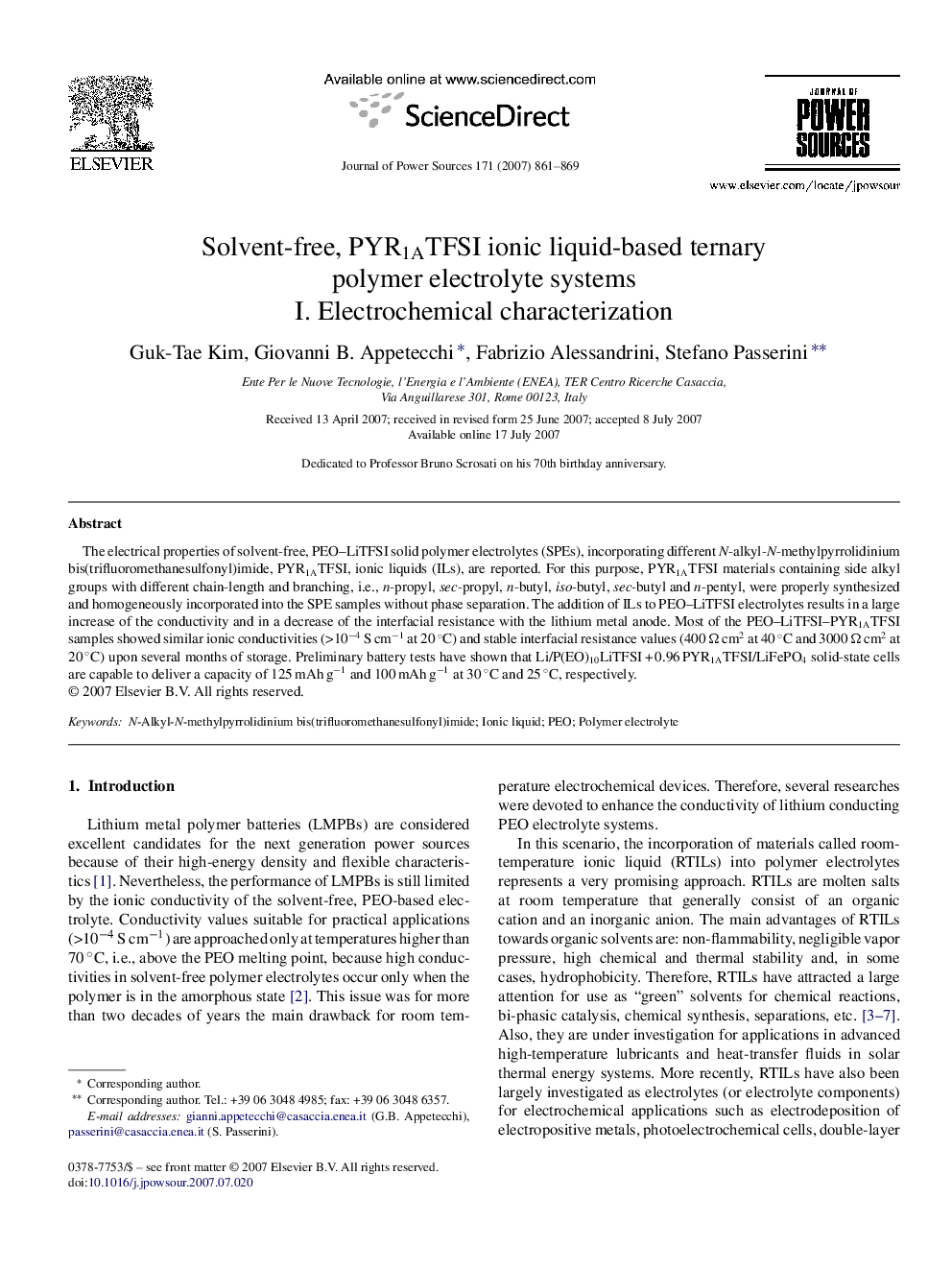| Article ID | Journal | Published Year | Pages | File Type |
|---|---|---|---|---|
| 1286404 | Journal of Power Sources | 2007 | 9 Pages |
The electrical properties of solvent-free, PEO–LiTFSI solid polymer electrolytes (SPEs), incorporating different N-alkyl-N-methylpyrrolidinium bis(trifluoromethanesulfonyl)imide, PYR1ATFSI, ionic liquids (ILs), are reported. For this purpose, PYR1ATFSI materials containing side alkyl groups with different chain-length and branching, i.e., n-propyl, sec-propyl, n-butyl, iso-butyl, sec-butyl and n-pentyl, were properly synthesized and homogeneously incorporated into the SPE samples without phase separation. The addition of ILs to PEO–LiTFSI electrolytes results in a large increase of the conductivity and in a decrease of the interfacial resistance with the lithium metal anode. Most of the PEO–LiTFSI–PYR1ATFSI samples showed similar ionic conductivities (>10−4 S cm−1 at 20 °C) and stable interfacial resistance values (400 Ω cm2 at 40 °C and 3000 Ω cm2 at 20 °C) upon several months of storage. Preliminary battery tests have shown that Li/P(EO)10LiTFSI + 0.96 PYR1ATFSI/LiFePO4 solid-state cells are capable to deliver a capacity of 125 mAh g−1 and 100 mAh g−1 at 30 °C and 25 °C, respectively.
